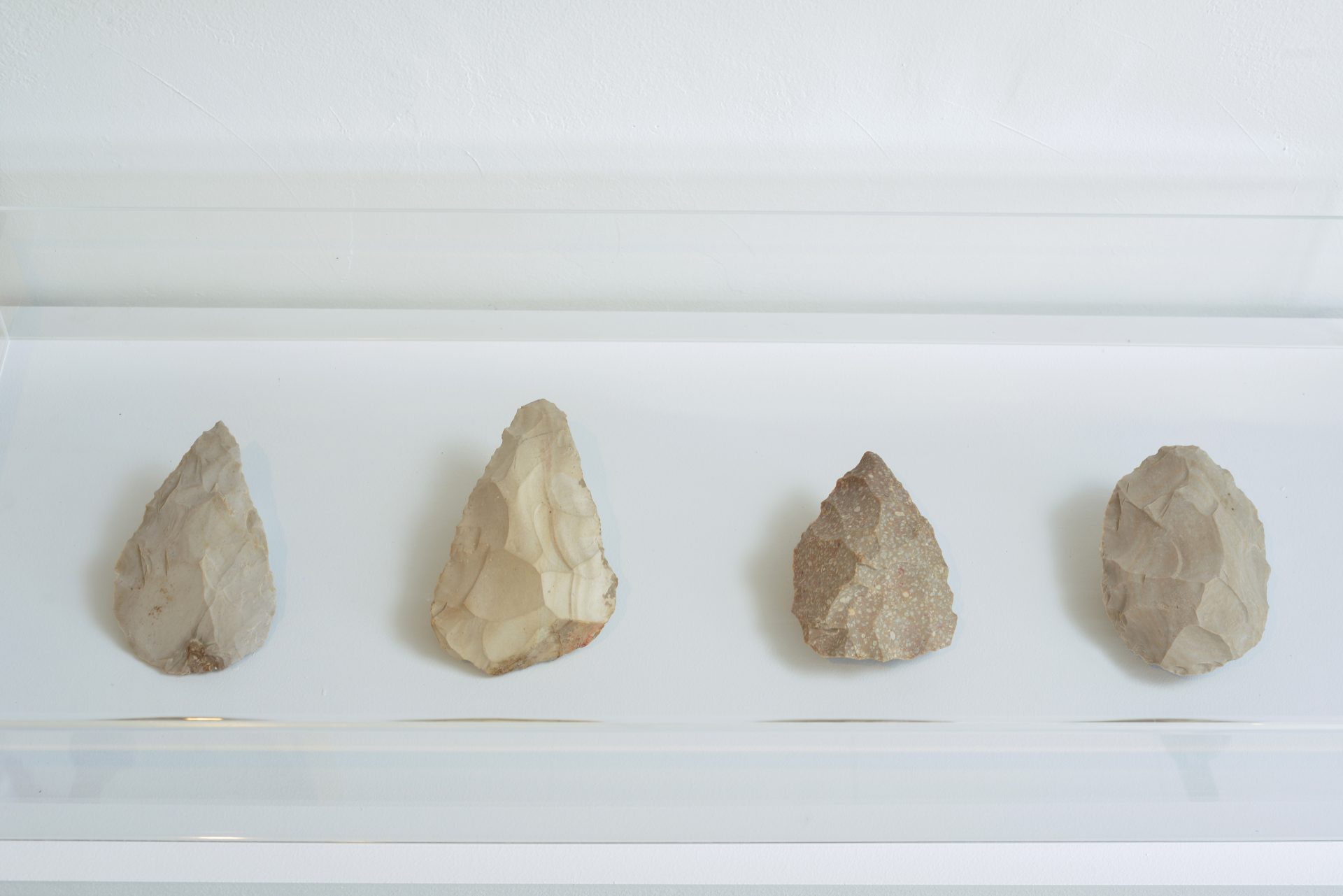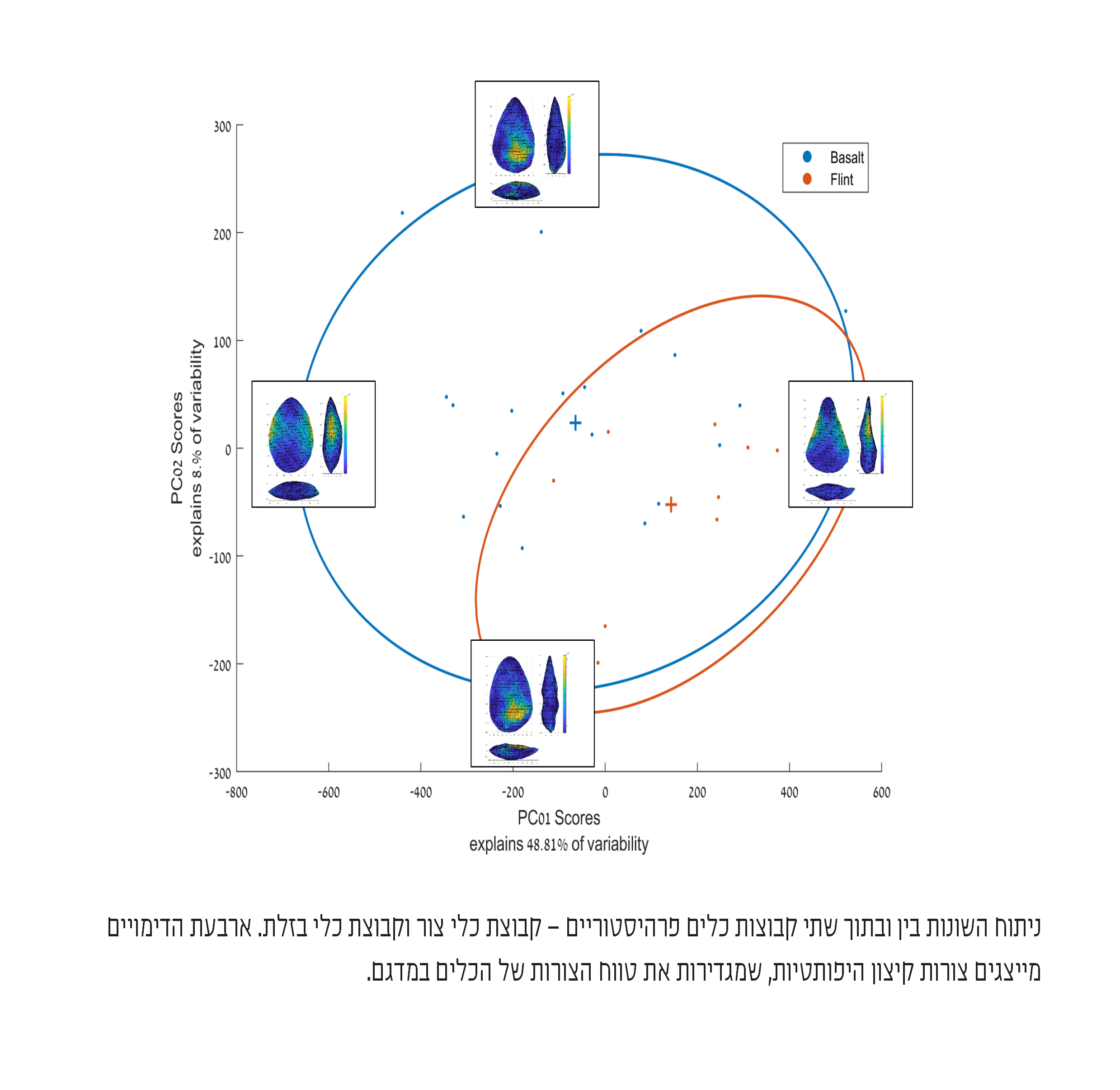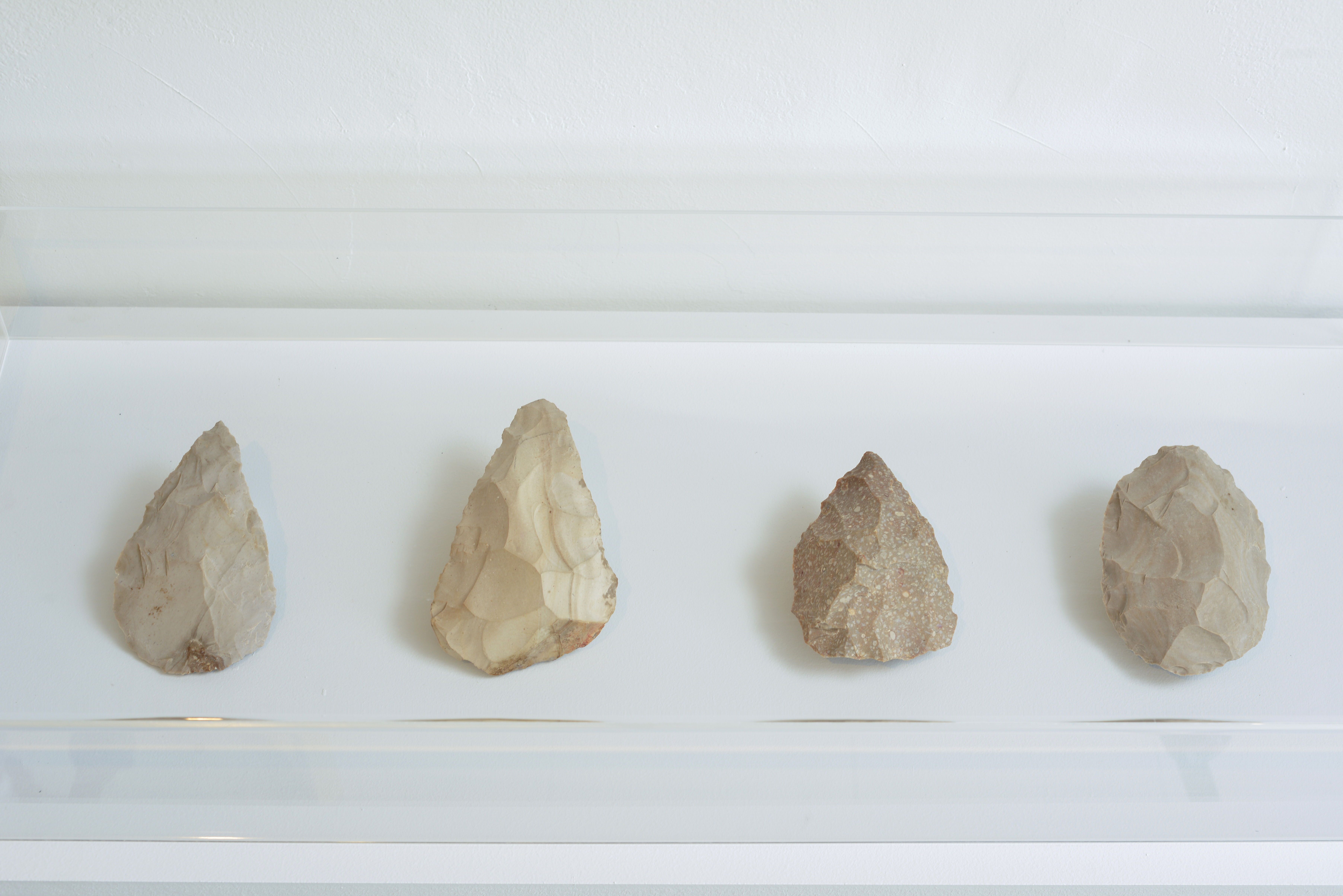The shape of prehistoric stone tools are one of the main sources of information to study human behaviour in early periods. However the complex geometry of these tools has made it difficult for researchers to objectively define the variety of shapes in one site and comparitively between sites. Traditionally descriptive comparisons of the forms of stone tools were classified according to the quality using verbal descriptions or simplified measurements of length, width and thickness.
The AGMT3D program was developed to enable archaeologists to compare these tools quantitively, objectively and with high resolution. The heart of the program algorithm “stands” the scanned tool in space in an identical position and casts a 3D net on the surface which enables the display of the form using a series of reference points. Using statistical tests in the program it is possible to measure exactly the size and character of the different tools as well as specific elements such as the edge and symmetry of the tool. The use of this program has enabled researchers to understand the cognitive, social and cultural development of the early human species.
IN the exhibtion are replicas of prehistoric stone tools made from flint
Carving: Gadi Herzlinger
Research partners: Leore Grossman and Naama Goren Inbar with the support of the Excellent Doctoral Student program – The Joseph Morton Mendel School for Advanced Studies of Humanities



